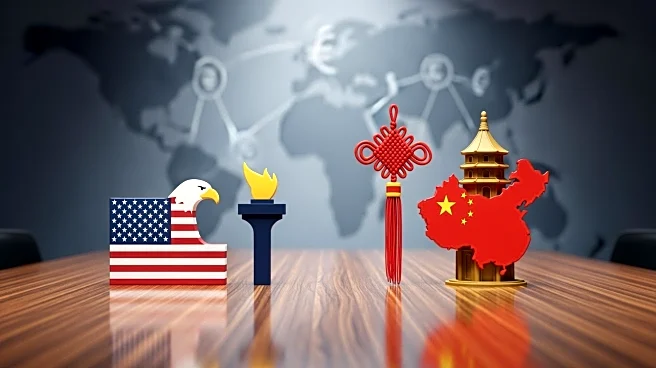What's Happening?
Applied Materials, a leading chip equipment manufacturer, is set to reduce its global workforce by approximately 4%, impacting around 1,400 employees. This decision is part of a broader restructuring strategy
aimed at streamlining operations and adapting to evolving market conditions. The company has cited increased pressure from tightened U.S. export controls on semiconductor technology, which have limited its ability to sell certain products to China-based customers. This move follows a warning from the company about a potential $600 million revenue impact in fiscal 2026 due to these expanded export curbs. The layoffs are expected to incur charges between $160 million and $180 million, primarily for severance and related costs, which will be recorded in the fourth quarter of fiscal 2025.
Why It's Important?
The layoffs at Applied Materials highlight the significant impact of geopolitical tensions and regulatory changes on the semiconductor industry. The U.S. government's tightened export controls are part of a broader strategy to limit China's access to advanced technology, which in turn affects American companies with substantial business in China. This restructuring effort by Applied Materials is indicative of the challenges faced by tech companies in navigating international trade policies while maintaining competitiveness. The workforce reduction aims to create a more agile and efficient organization, potentially positioning the company for long-term growth despite current market uncertainties.
What's Next?
As Applied Materials implements these layoffs, the company will likely focus on enhancing its operational efficiency and innovation capabilities. The restructuring is expected to facilitate faster decision-making and adaptation to market changes. Stakeholders, including investors and employees, will be closely monitoring the company's performance and strategic direction in the coming months. Additionally, the broader semiconductor industry may see similar restructuring efforts as companies adjust to the evolving regulatory landscape and global supply chain dynamics.












